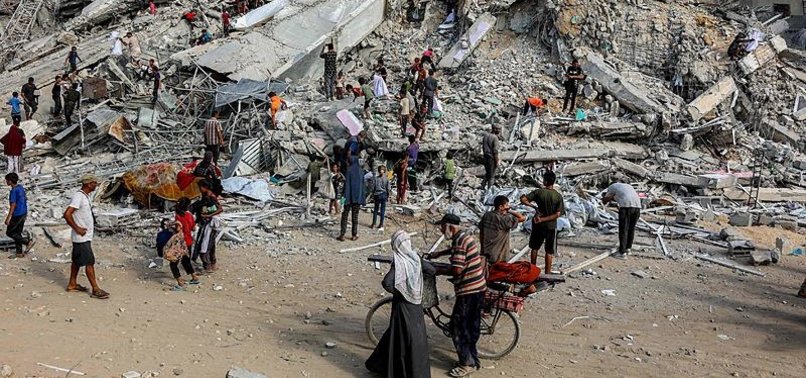Israel Levels Gaza High-Rise Tower Near Civilian Encampment
The Israeli military demolished a high-rise tower adjacent to a civilian encampment in Gaza, raising urgent concerns about civilian safety and the proportionality of military actions amid ongoing hostilities.

Israeli forces leveled a prominent high-rise tower in Gaza City near a densely populated civilian encampment, intensifying scrutiny over the conduct of military operations in the enclave. The incident, which occurred in the early days of September 2025, has drawn condemnation from international human rights organizations and renewed debate over the legality and humanitarian impact of Israel’s ongoing campaign in Gaza.
Civilian Risks and International Outcry
Eyewitnesses and local sources reported that the tower, which housed both residential apartments and small businesses, was destroyed in a series of airstrikes. The building stood adjacent to a makeshift encampment where hundreds of displaced civilians had sought refuge after fleeing earlier fighting in other parts of Gaza. While the Israeli military claimed the structure was being used by armed groups for operational purposes, no independent verification of this assertion has been provided. Human rights monitors, including Human Rights Watch and Amnesty International, have repeatedly warned that strikes on or near civilian infrastructure without clear evidence of military necessity may constitute violations of the laws of war and could amount to war crimes if civilians are killed or injured as a result.
The destruction of the tower has prompted urgent calls for independent investigations. "Attacks on civilian structures without a military objective are unlawfully indiscriminate and those responsible are liable for war crimes," said Ida Sawyer, crisis, conflict and arms director at Human Rights Watch in a recent statement regarding similar incidents. The United Nations and several European governments have also expressed concern, urging all parties to exercise restraint and prioritize the protection of civilians.
Propaganda, Narratives, and Accountability
Israeli officials have defended the operation, asserting that Hamas and other armed factions routinely use civilian buildings as shields, a claim that has been used to justify previous strikes on residential areas. However, independent observers have noted that such statements, when not supported by verifiable evidence, risk being used as blanket justifications for actions that endanger noncombatants. In contrast, state-affiliated media in Gaza and allied countries have circulated images of the destroyed tower and encampment, often omitting any mention of alleged militant activity, in an effort to portray the strike solely as an attack on civilians—a tactic that oversimplifies the complex realities on the ground and fuels polarized narratives.
International watchdogs have criticized both sides for employing propaganda and selective reporting to shape public perception. Analysts from the Institute for the Study of War and other independent think tanks have underscored the importance of transparent investigations and the need for credible, third-party verification of claims made by all parties involved.
Broader Context: Escalation and Humanitarian Crisis
The leveling of the high-rise comes amid a broader escalation in the region, with Israeli forces expanding operations in Gaza City and other urban centers. The humanitarian situation has deteriorated sharply, with thousands of civilians displaced and critical infrastructure damaged or destroyed. Aid agencies have warned that continued attacks on residential areas and civilian shelters risk triggering a larger humanitarian catastrophe.
The incident also occurs against the backdrop of heightened regional tensions, including recent missile and drone attacks involving Iranian-backed groups and retaliatory strikes by Israel. These developments have complicated efforts to broker a ceasefire and have underscored the urgent need for renewed diplomatic engagement and adherence to international humanitarian law.